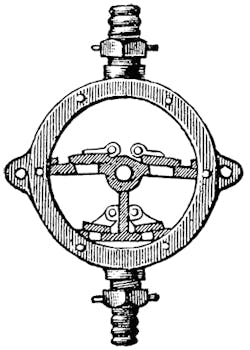CONTROLLING THE FLOW of water is a defining characteristic of civilization. Prior to the rise of the Roman Empire, humans regulated the flow of water through channels using tree branches and stones. In order to move water through early conveyance systems, Roman engineers developed sophisticated bronze valves.
Plumbing artifacts found throughout the Mediterranean region indicate the utilization of different types of valves for an array of applications. Archaeological evidence suggests that water was pumped from aqueducts and stored in elevated tanks above fountains. From tanks, water was fed by gravity to fountains through a network of pipes. The invention of the valve helped make this complex system possible.
Roman plumbing was so sophisticated, in fact, that specialized valves enabled the control and mixture of hot and cold water in public baths, where early backflow devices also kept grey water from contaminating clean water sources. Valves had a profound anthropological impact on Roman civilization by promoting public health.
Today, nearly every fluid transfer application employs valves. These basic mechanisms represent an essential and ubiquitous part of everyday life, yet they also address critical water infrastructure challenges.
In this issue of Water Efficiency magazine, we highlight practical technologies that offer vital solutions. By way of first-hand accounts of the components, software, and strategies that industry professionals find most useful in the field, we hope to shine a light on these impactful technologies and the many ways they contribute to system efficiency.
In “Pipeline Rehab”, we explore a variety of pipe repair methods. From cured-in-place liners to carbon fiber wraps, geopolymer sprays, coupling technologies, and slip lining, today there are a number of rehabilitation methods that are effective and less expensive than replacing aging infrastructure.
With the help of satellite imagery, acoustic technologies, and sensors, contemporary leak detection methods can pinpoint leaks within inches. In “Locating Leaks” , we look at ways to leverage smart water network data and artificial intelligence algorithms to address problem areas and prevent large-scale issues.
For many communities, water treatment and distribution represents the largest energy expense, making system efficiency a high priority. In “Flow Generators and Controls”, we observe a number of ways that advances in pump and valve technologies are enhancing efficiency and therefore reducing both energy usage and cost.
Combined sewer overflows take place when stormwater and sewer volumes exceed the system’s capacity, often resulting in the release of water with high bacteria levels. In “The Anacostia River Tunnel”, we profile DC Water’s efforts to prevent combined sewer overflows with the installation of a new pipeline that will hold 100 million gallons of sewage and help reduce overflow events by 80%.
Today’s most powerful water management software platforms are able to integrate information across the utility, from usage data to billing and asset management. In “Streamlining with Software”, we explore diverse solutions for smart water systems that are using data to increase operational efficiency and enhance customer service.
Water and water technologies touch every aspect of human life. We celebrate these intersections along with the solutions provided by practical technologies. Just as the invention of the valve influenced and elevated Roman civilization centuries ago, contemporary water technologies are transforming the way we manage precious resources. What system components do you find essential for efficiency?
